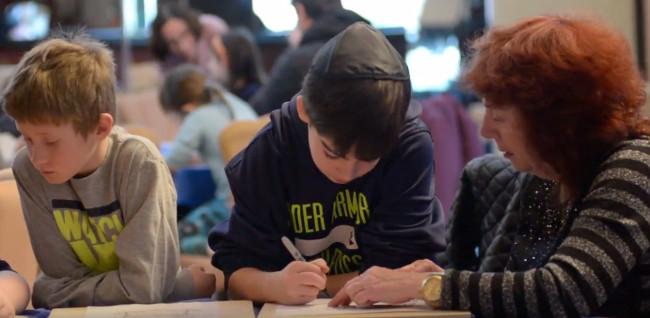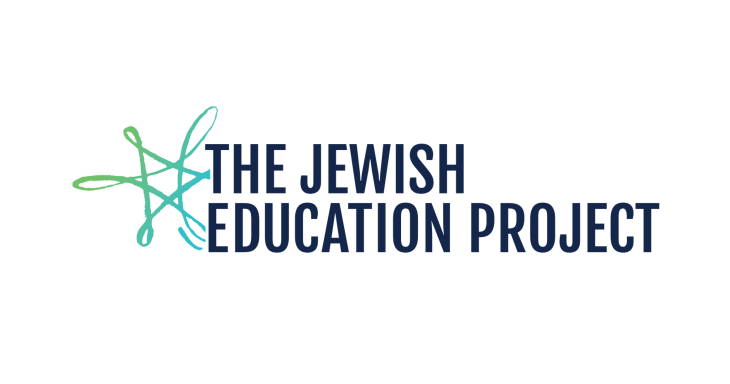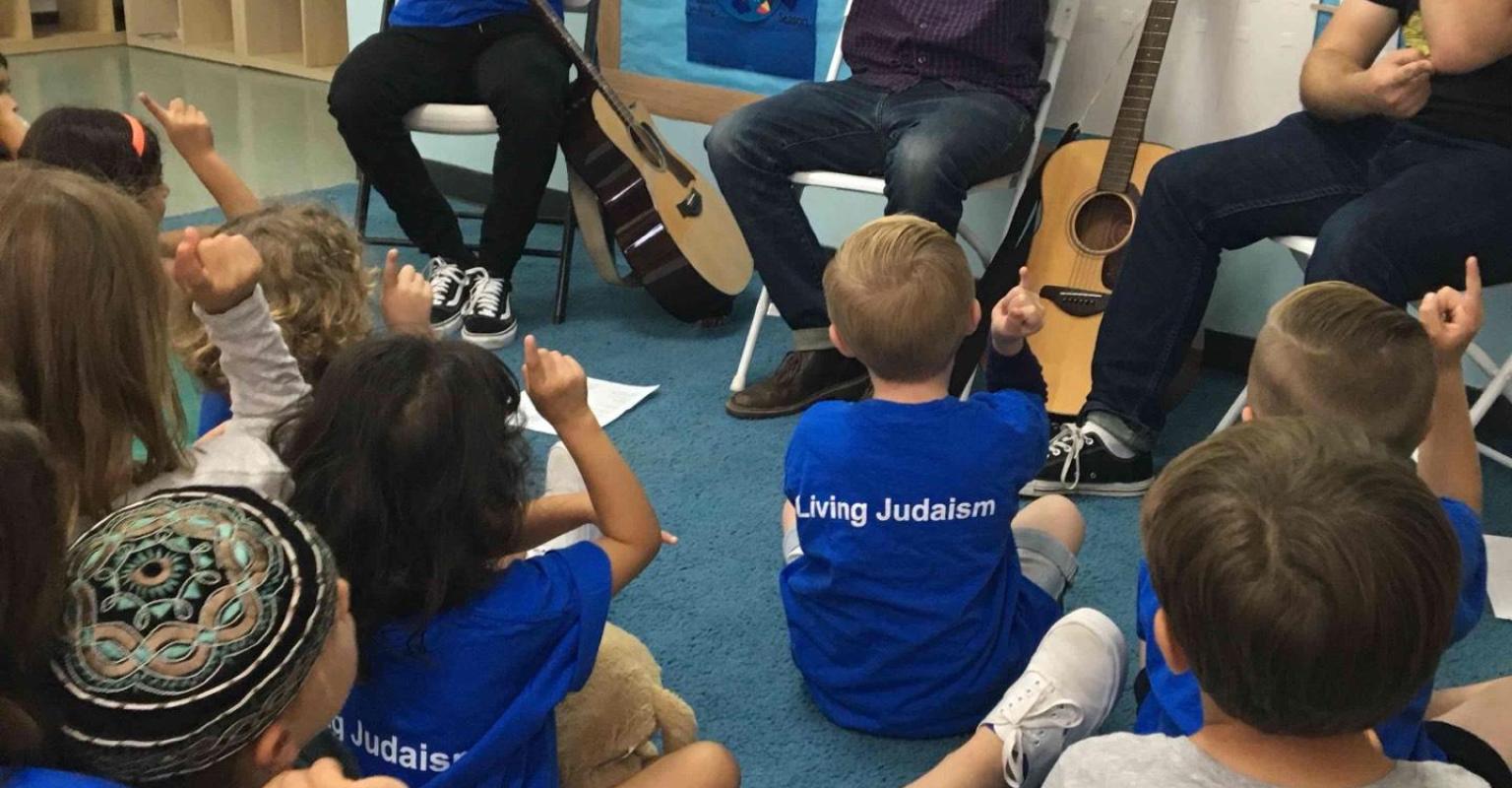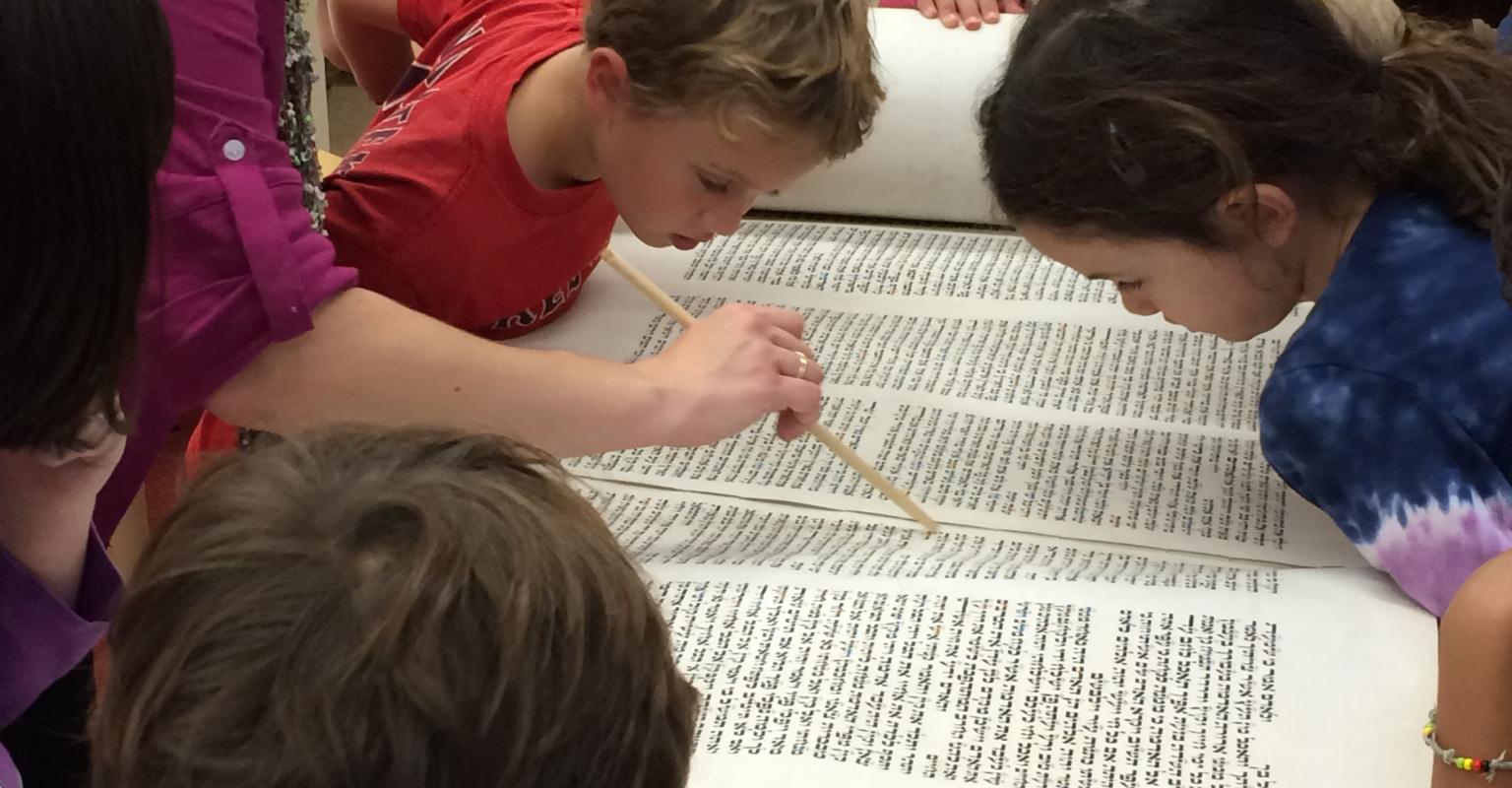Family Learning Model: Family Mitzvah Days
Merrick Jewish Centre, Merrick, NY

Model Summary:
Parents and children gather together on Sunday mornings to learn about and engage in a mitzvah in a meaningful way while building connections with the Merrick Jewish Centre community. Established congregants meet with families to tell their own stories on how they have found personal meaning in a specific mitzvah and how this mitzvah has become a part of their lives. After hearing these stories, families engage in an activity that focuses on that mitzvah. The activity may be learning about, such as learning at the zoo how to protect the habitats of wild animals or maybe living the mitzvah, such as packing and delivering meals for Thanksgiving.
Family Mitzvah Days remains a regular component of the educational experience at Merrick Jewish Centre (MJC). There have been changes around incentives for participating in Family Mitzvah Days. In 2014, the program began formally acknowledging participation in a Family Mitzvah Day by giving learners Mitzvah badges. This raised the attendance of those in the younger grades (2nd-4th), but it didn’t motivate older learners. In addition, physically creating each badge was very work-intensive. The following year, they gave participants Mitzvah beads, a bead to add to a string bracelet each time they participated. This practice was viewed as successful (learners liked collecting the beads), attendance was stable, and this incentive was more appealing to the older learners.
The educator, however, was very uncomfortable with the idea of giving learners an extrinsic reward for performing a mitzvah and in 2016 discontinued awarding beads or badges.
Interestingly, while they did not hear any negative feedback about removing the incentives, attendance and excitement went down. Reflecting on the lowered attendance, the educator spoke with a consultant about her concerns. The consultant shared research on teens (see below) indicating that when learners are incentivized to do community service with the promise of a reward, there is indeed an increase in their later practice of performing related actions (in this case, mitzvot).
For 2017-2018, MJC plans to keep the same basic format for Family Mitzvah Days and will reinstitute extrinsic incentives. The educator is still working on ways to adapt the model to build participation and excitement.
Who are the Learners?
Learners are 2nd-6th graders along with their families.
Who are the Educators/Learning Facilitators?
The Director of Education, teachers, and congregants.
When Does THE Learning Happen?
Generally Sunday mornings, 10 am to noon, preceded by an optional Family service which begins at 9:15 am. Some of the learning takes place on weekdays during regular religious school hours; regular classes are not in session on Sundays.
Where Does the Learning Happen?
-
In the building: in the chapel (Center for Jewish Life); library; conference room; ballroom and other large communal spaces
-
In the community: local animal shelter, INN (soup kitchen), Payless shoes (to buy shoes to donate), on the road to deliver Thanksgiving food to families
- Field trips: zoo
What is the Learning? How is it Designed?
Families come and learn about a specific mitzvah. A congregant tells their personal story about how they have engaged and found personal meaning in that mitzvah, what they have gained, and how it has become a part of their lives.
Family Mitzvah Day has focused on the following mitzvot:
-
hiddur p’nei zakein-honoring the elderly: congregants telling stories in the sukkah about celebrating Sukkot when they were younger
-
ve’ahavta lerei’acha kamocha-love your neighbor as yourself: Veterans telling stories of serving our country
-
bal tashchit- do not waste: paper recycling and bottle collections
-
ma’achil re’evim-feeding the hungry: distributing food at Thanksgiving; preparing a meal for a soup kitchen
-
chinuch -education and tzedakah: collecting bottles to raise money to educate children in Uganda
-
tza’ar ba’alei chayim-taking care of animals: visiting animal shelters and zoos to learn about how to take care of and protect animals
- g’milut chasadim –acts of loving-kindness: purchasing shoes at Payless to donate to needy children
What Were You Trying to Achieve with this Model?
-
For learners to value that mitzvot can guide us to be better people and to build a better community.
-
For learners to gain the knowledge that mitzvot are not simply “good deeds” but they are based in Jewish law and texts.
-
To motivate learners and to give them the tools needed to engage in mitzvot.
-
To give learners an opportunity to value Jewish learning.
-
For learners to reflect on how performing mitzvot can be meaningful and can connect us to the community.
-
For learners to joyfully engage in mitzvot and will feel enriched by doing Jewish things.
-
For learners to reflect on how living Jewish values and performing mitzvot feels good and enriches families and their lives.
-
For learners to experience performing these mitzvot as a family. When they engage in the mitzvah together as a family, there are opportunities for questions to be asked, and for family conversations to take place.
-
To instill a sense of pride in students for performing a mitzvah.
- To create a connection between “established” congregants - especially the Shabbat regulars - with younger families.
Key First Steps and Recruitment Plan:
-
This model grew out of Sunday programs that had been established several years ago. The Education Director realized that parents came when the learning was mitzvah based. Recognizing that parents saw mitzvot as meaningful, the Education Director chose to focus on mitzvot. Since Sunday is not generally a required day, the learning had to be meaningful and compelling to bring families in for the learning experience.
-
To advertise Mitzvah Days, flyers are given out in class, emails are sent home, parents are called by phone, and there are postings on Facebook.
- An unexpected challenge was that it was sometimes difficult to find congregants to speak with families. A number of congregants were not confident about speaking to a group and there were scheduling conflicts for others.
Role of governance and Clergy:
-
Both the senior and the associate rabbis are very supportive – brainstorming with innovation and serving as thought partners.
- There is an informed and supportive education committee.
Budget:
Approximately $2500 - $3000 per year. Merrick Jewish Centre has a donor who supports this learning. The Education Director noted that this model could be done with fewer funds. The main expenses are for 1-2 teachers/sessions, food and transportation.
Hiring Needs:
1-2 teachers assist. Because this model includes parents and congregants, only minimal assistance is needed from teachers.
Relationship of Model to Congregational Learning System:
Family Mitzvah Day is a required component of religious school. All 2nd-6th graders are required to attend 3 mitzvah days out of a choice of about 12.
How Do You Describe Your Congregation?
-
Conservative Congregation on Long Island with approximately 600 family units.
-
There are approximately 260 children enrolled in grades K-6.
-
A significant percentage of congregants have been members for 35 years or more.
- A senior rabbi, an associate rabbi, a Director of Education, and a youth director serve the congregation.
- Models-In-Action
- Intergenerational Learning
- Tzedakah
- After School and Beyond
- Congregational Learning
- Family Engagement
- Educator Training
Discover more

Family Learning Models focus on families both learning and growing Jewishly through shared experiences and study.

Living Judaism is an all-inclusive experiential learning model of Jewish Education. The purpose of the model is to engage every learner, provide carefully constructed learning experiences, build a strong identity, root students firmly in tradition, and create memories to last for years to come.

Mayim, our initial example of "Additional" Models, could be placed in a Multi-aged, Project-Based Learning, or Experiential Learning bucket. Mayim is a K-5 learning community in which depth of relationships and depth of learning are intentionally fostered and visible everywhere.
